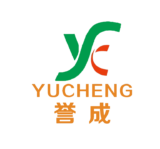The cost of CNC machining is a key concern for product designers, engineers, and buyers when choosing a manufacturing solution. Although CNC machining offers high precision and speed, the price can vary greatly depending on factors like materials, part complexity, production volume, and post-processing. In this article, we’ll break down the main components that influence the cost of CNC machining—so you can better plan your projects and control your manufacturing budget.

1. Material Cost
Material selection is one of the most significant pricing factors. Different materials vary widely in price and machining difficulty.
- Affordable options: Aluminum 6061, mild steel, POM plastic
- Mid to high-end: Stainless steel (304, 316), brass, titanium, PEEK
- Factors affecting cost: Base price per kg, size, wastage rate, and availability
Tip: Choose cost-effective and easy-to-machine materials for non-structural parts whenever possible.
2. Machining Time & Complexity
The longer and more complex the machining process, the higher the cost.
- Number of axes: 3-axis is standard; 4-axis and 5-axis machines are more expensive
- Part geometry: Complex features like deep pockets, undercuts, tight radii, or thin walls increase machining time
- Tolerance: Tight tolerances (e.g., ±0.01 mm) require slower cutting speeds and precision setups
- Custom fixtures: Complex parts may need jigs, raising setup costs
Tip: Simplify part designs and avoid unnecessary features to reduce machining time.
3. Post-Processing Costs
After machining, many parts require surface finishing or treatment.
- Common finishes: Anodizing, bead blasting, powder coating, plating, laser engraving
- Cost drivers: Finish type, color matching, corrosion or wear resistance requirements
Tip: Choose only essential finishes to save costs without compromising function.
4. Labor & Engineering Costs
Despite automation, CNC still requires skilled labor and engineering:
- CAM programming: Engineers must program toolpaths
- Setup time: Installing tools, jigs, and verifying first article
- Inspection: Dimensional checks, QA reports
- Handling: Cleaning, packaging, labeling
Tip: Provide clear 3D CAD files (e.g., STEP/IGS) and specifications to reduce revision time and cost.
5. Production Volume
Cost per unit is heavily influenced by order quantity:
- Prototypes: One-off or small batches are expensive due to setup and programming time
- Batch production: Spread fixed costs over multiple units, greatly lowering unit price
- Price tiers: Per-part price typically drops at 10, 100, or 1,000 units
Tip: Group production runs to take advantage of volume pricing.
Bonus: Sample Cost Formula
Estimated Price = Material Cost + (Machining Time × Rate) + Finishing + Labor Overhead + Margin
Example (Aluminum part):
- Material: $2
- Machining: 0.5 hrs × $30/hr = $15
- Anodizing: $5
- Misc.: $3
- Total: $25 per part
Conclusion
Understanding the cost of CNC machining helps businesses make informed decisions, reduce unnecessary expenses, and streamline product development. By optimizing part design, choosing suitable materials, and planning production volumes, you can dramatically lower costs while maintaining quality.

